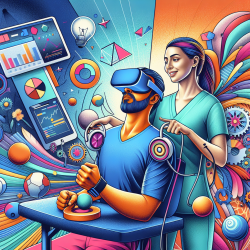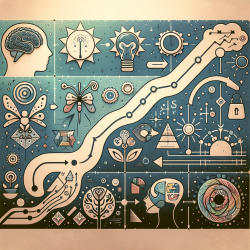Introduction
Occupational therapists are pivotal in shaping the lives of children, especially those with Individualized Education Programs (IEPs). However, the increasing demands of the profession can lead to burnout, a state of emotional, physical, and mental exhaustion. As business executives in the field of online therapy services, we recognize the importance of innovative solutions to combat this challenge. One such solution is the strategic use of technology in therapy, which not only enhances service delivery but also inspires therapists to reignite their passion for their work.
The Burnout Dilemma
Burnout among occupational therapists is not uncommon. The constant pressure to meet the diverse needs of children, along with administrative responsibilities, can take a toll. According to recent data, over 50% of occupational therapists report feeling burnt out at some point in their careers. This alarming statistic underscores the need for effective interventions to support these dedicated professionals.
Technology as a Catalyst for Change
Incorporating technology into occupational therapy can be a game-changer. Online therapy services, for instance, offer a flexible and efficient platform for delivering high-quality care. Here are some ways technology can help combat burnout:
- Increased Flexibility: Online platforms allow therapists to work from various locations, reducing travel time and associated stress.
- Enhanced Efficiency: Digital tools streamline administrative tasks, enabling therapists to focus more on direct patient care.
- Access to Resources: Technology provides access to a wealth of resources and training materials, fostering continuous professional development.
- Improved Communication: Virtual platforms facilitate better communication with colleagues and families, enhancing collaborative efforts in IEP planning and implementation.
Inspiring a New Era in Therapy
By embracing technology, occupational therapists can revitalize their practice and find renewed inspiration in their work. Here are some strategies to integrate technology effectively:
- Invest in Training: Participate in workshops and online courses to stay updated with the latest technological advancements in therapy.
- Utilize Online Therapy Platforms: Leverage platforms like TinyEYE to deliver therapy sessions that are both effective and convenient.
- Engage in Professional Networks: Join online forums and communities to share experiences and gain insights from peers.
- Prioritize Self-Care: Use technology to schedule regular breaks and self-care activities, preventing burnout and promoting well-being.
Conclusion
The integration of technology in occupational therapy is not just a trend; it is a necessity for the future of the profession. By leveraging online therapy services and other technological tools, occupational therapists can overcome burnout, enhance their practice, and continue making a meaningful impact on the lives of children. As we navigate this digital age, let us embrace these innovations and inspire a new era of therapy that is both effective and sustainable.










